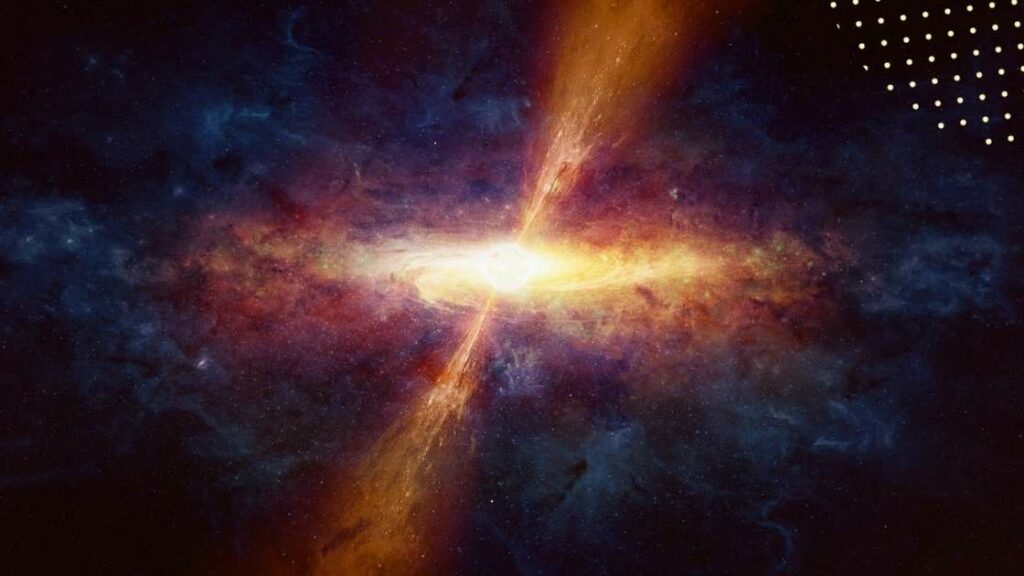The light from this celestial object, which is 500 trillion times brighter than our sun, traveled for over 12 billion years to reach Earth.
Scientists found something that may be the brightest thing in the Universe. It’s called a quasar, and it might be the brightest thing ever in the whole universe. This celestial body is called qusar and it has a black hole at its center that’s growing super fast.
It’s gobbling up as much as an equivalent of one whole sun every single day!
This quasar is unbelievably bright—about 500 trillion times brighter than our sun. Imagine that! The black hole inside it is more than 17 billion times bigger than our sun. A team of scientists from Australia discovered this, and they wrote about it in a journal called Nature Astronomy.
Even though the quasar looks tiny in pictures, scientists think it’s a really wild and intense place.

The spinning disk around the quasar’s black hole is a bit like a gigantic storm in space. It’s made up of bright, swirling gas and other stuff that the black hole has swallowed from stars. Think of it as a massive cosmic hurricane, swirling around the black hole in the center.
“This quasar is the most violent place that we know in the universe,” said Christian Wolf, the lead author from Australian National University, in an email.
The European Southern Observatory first spotted the object, called J0529-4351, during a sky survey in 1980, but they thought it was just a star. It wasn’t until last year that they realized it was a quasar—a super active and bright core of a galaxy. Observations from telescopes in Australia and Chile’s Atacama Desert confirmed it.
“The exciting thing about this quasar is that it was hiding in plain sight and was misclassified as a star previously,” said Priyamvada Natarajan from Yale University in an email. She wasn’t part of the study.
After following up with further observations from the Very Large Telescope (VLT) in Chile, they have now found it is the most luminous object in the universe that we know of.
Further observations and computer modeling have shown that the quasar is consuming the equivalent of 370 suns every year—roughly one sun per day. The team also found that the black hole at its center has a mass of 17 to 19 billion times that of our sun. More observations are needed to understand how fast it’s growing.
The research was done in collaboration with the ESO, the University of Melbourne, and the Sorbonne University in France.
What are quasars?
Quasars, short for “quasi-stellar radio sources,” are incredibly energetic and distant celestial objects. They appear as point sources of light and are among the most luminous objects in the universe. Quasars are powered by supermassive black holes at the centers of galaxies.
They are galactic cores where gas and dust falling into a supermassive black hole release energy in the form of electromagnetic radiation.
As material falls into these black holes, it forms a hot, rapidly rotating disk known as an accretion disk.
The intense gravitational forces and friction within the accretion disk generate immense amounts of energy, emitting radiation across the electromagnetic spectrum, from radio waves to X-rays.
Quasars were more common in the early universe and are believed to play a significant role in the evolution of galaxies and the structure of the universe.



